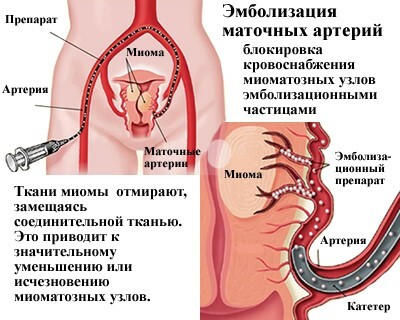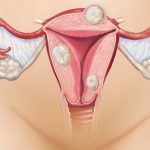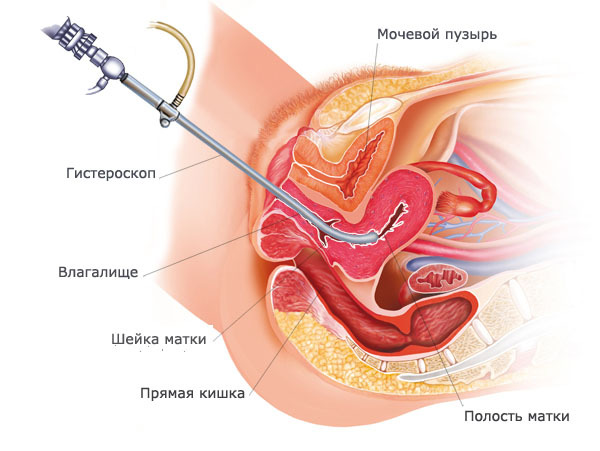A benign process characterized by abnormal growth of muscle tissue in the uterine cavity, experts call myoma. This disease is one of the most common diseases of the female sexual sphere. That is why for many girls and women the question of whether pregnancy is possible after removal of fibroids, is very relevant. The benign character of the tumor enables doctors to postpone surgical treatment as much as possible and try to solve this problem in conservative ways. However, the rapid growth of the muscular layer of the uterus body often forces one to resort to surgery, the volume of which depends on the stage of the process and the place of its development.
The effect of a woman's uterine fibroids on reproductive function
Benignthe tumor of the main female genital organ in 85% of cases affects the muscular layer directly, and in other cases it is located in the cervix of the uterus. About 60% of patients with this diagnosis can tolerate the entire period of pregnancy and childbirth, and even the process of conception passes without any problems.

Do not forget about the complete unpredictability of a benign tumor during pregnancy. In this period, the first place is the change in the hormonal background in the patient. In the medical literature, cases are described where, under the influence of female sex hormones, the muscular nodules on the uterus completely disappeared and did not appear in the future. However, there is a rapid growth of muscle tissue, which leads to the threat of termination of pregnancy and even rupture of the uterine wall.
In addition, the excessive growth of the uterine nodes leads to difficulties during delivery, as it reduces the contractile capacity of the uterus, and during the operation of a caesarean section such a pathology can cause bleeding and provoke an organ amputation.
All of the above poses a rather complex dilemma for the specialists: whether to allow pregnancy to a patient with such a disease or to insist on conducting a sanitizing operation.
What operations are offered by modern clinics for the removal of myomatous nodes
If conservative therapy with uterine myoma has not produced the expected result, and specialists have decided to conduct the operation, patients have plenty to choose from. Methods of conducting myomectomy at the present time there are very different.
Hysteroscopic removal of
nodes If a mother's future issue remains the first for a woman and she has a submucosal node diagnosed, such surgery becomes a method of choice. With the help of a special apparatus, without any incision of the skin, specialists penetrate into the uterine cavity through the cervix. All manipulation is carried out under general anesthesia, however this operation has no usual invasive consequences.
It should be noted that depending on the size of the tumor, the surgeon can use an electrosurgical or laser method of removal. However, the usual mechanical method is most often used. At the same time, the process itself is simple enough technically and requires only 10 to 15 minutes.
Laparoscopic operations
If the patient requires a large amount of surgical intervention, or the question is about extirpation of the uterus with appendages, then the choice of the surgeon should remain behind the laparoscopic method of treatment. This operation is the most common in modern medical centers, therefore belongs to the category of the safest.
The use of special equipment allows you to minimize the postoperative period and guarantee a woman the opportunity to have children with uterine preserving operations. Pregnancy after laparoscopy, to which laparoscopy relates, occurs much more often than with the removal of myomas nodes by the usual open method.

Embolization of arteries supplying the uterus with blood
One of the most advanced methods of removing fibroids or its nodes with minimal interference is embolization of the uterine vessels. In this case, a special substance is inserted into the arteries and veins of the body of the uterus and its appendages, which closes the lumen of the vessels in a certain area and deprives the nutrition of the altered parts of the uterine body.
After the cessation of blood flow to the myomium, it decreases in size and is subsequently necrotic. This method is the safest for expectant mothers.

What is dangerous for myomectomy for future pregnancy
Most modern obstetrician-gynecologists are in favor of conducting a laparoscopic operation or hysteroscopy in the patient's uterine body. This is explained by the guaranteed removal of provoked areas and control over possible malignancy of the process.

There are other risks for future mothers who underwent myomectomy:
- First of all, with such surgical interventions, the risk of developing the adhesion process is high enough that even in the absence of nodes on the uterus it can hamper the development of the desired pregnancy.
- Such methods of treatment do not guarantee the absence of subsequent relapses of the disease. After the operative removal of the uterine myoma, the occurrence of repeated foci was noted in 15-18% of cases.
- Possible complications in childbirth in the form of rupture of the uterus along the scar and uterine bleeding remain one of the most disturbing problems of modern midwifery.
It should not be forgotten that any cavitary interventions, especially on the female genital area, can provoke such complications during pregnancy, such as:
- ectopic pregnancy,
- early or late miscarriages,
- fetal abnormalities due to impaired blood supply to the uterus.
In addition to the above risks, the specialist faces other issues related to the transferred operations on the uterus. The number of scars on the operated organ is of interest, whether the uterine cavity has been opened, the probability of the growth of scar tissue at the end of pregnancy. On all this depends on successful gestation and minimization of risk at birth.
In modern clinics, women are recommended to use the EMA method to remove the myomalous nodes, as the most sparing, giving the lowest percentage of complications and the most physiological for the future mother. Most studies confirm such advertising, but the last word in deciding the question of the operation remains with the attending physician.
 We recommend reading the article about the operation with uterine myomas. From it you will learn about the possible consequences after the operation to remove uterine fibroids, as well as the chances of preserving the organ.
We recommend reading the article about the operation with uterine myomas. From it you will learn about the possible consequences after the operation to remove uterine fibroids, as well as the chances of preserving the organ.
What to do to a woman after an operation to remove a hysteromyoma
The attitude to the postoperative period should be the same as after a usual cavitary operation. The first place, of course, includes diet issues. Patients with this diagnosis are strictly prohibited from constipation, namely stool disruption is the usual condition after surgery.
The diet of this contingent of patients should be rich in fiber, which enhances intestinal motility. In addition, the diet should include buckwheat porridge, avoiding rice, jelly, strong tea. A great help can be and microclysters from chamomile and succession.
Physical stresses should completely exclude effects on the abdominal and pelvic organs. Allowed swimming, quiet walking in the open air, exercise therapy.
The woman needs constant control over the condition of the abdominal cavity, pelvic organs and scars on the wall of the uterus. It is on this depends the success of conception of the child.
Can I get pregnant after removing fibroids? Everything depends on the volume of the operation performed, the condition of the female reproductive system and the strength of the scars on the uterus. Most experts believe that if all the recommendations of the attending physician, diet and regime are met, the woman, after removing the education on the body, can conceive and endure a healthy child. The main requirement is that the very process of conception should take place no earlier than 12 months after the operation.
During pregnancy, doctors have additional requirements for a similar contingent of expectant mothers. Most often it is an urgent request to wear a bandage for 40 weeks to reduce the burden on the postoperative scar.
Maternity after removal of fibroids is not a phenomenon, more than 50% of all treated women are capable of this condition. And only from the joint efforts of doctors and the future mother depends the successful solution of the problem of the birth of a new man.

